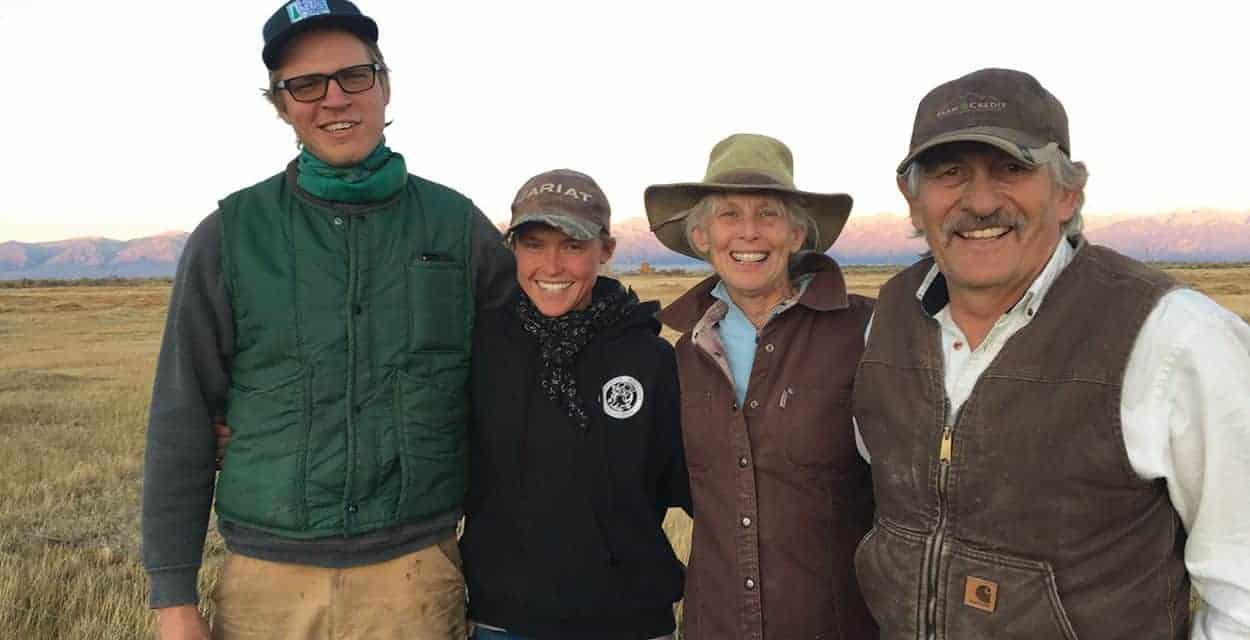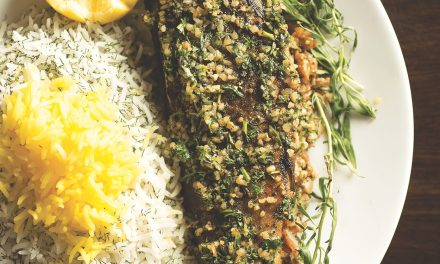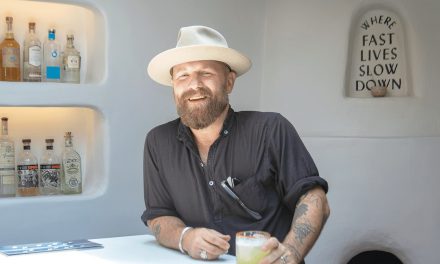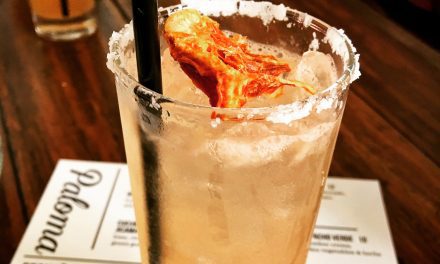When the Grass Isn’t Greener Someplace Else
By Sarah Wentzel-Fisher

Supporting and celebrating local food seems straightforward when you go to the farmer’s market and you can chat with the person who grew your produce, but many of the systems, policies, processes, and infrastructure needed to have resilient regional food systems are often harder to see and to make sense of. This is the first installment of edible’s new Faces of Food column, which will highlight some of the folks who work to make systemic changes in our food systems to regionalize production, distribution, and markets. It will focus on some of the unsung heroes of local food and how the work they do makes a difference.
Grass-finishing beef in the Southwest is not an easy undertaking. Our climate is dry, and our drought-prone grasslands can be sparse and brittle. Providing a year-round supply of local grass-finished beef to regional grocery chains is impossible—almost. Raising grass-fed beef that also supports regional economies and mitigates climate change takes vision, persistence, and a pioneering spirit.
George Whitten and Julie Sullivan, cattle ranchers operating the San Juan Ranch near Saguache, Colorado, finish their beef on grass. They have spent the last twenty years trialing systems of grass-finished meat in an effort to run a profitable business, keep their community vital, and save the planet. Beginning in the late 1990s, Whitten and Sullivan embarked on a journey to produce economically viable grass-fed beef that doesn’t require huge amounts of inputs, at a scale that some years might even produce a profit. In their exploration, they have tested and created a number of feeding systems and business models that may be the prototypes for the new, climate-positive method of western beef production.
Typically in the West, the beef we eat is raised in open-range cow-calf operations, then sold to finishers who feed the cows grain in feedlots for six months before they’re slaughtered. In a grain-finishing system, a beef will get to a profitable sale weight in about one hundred days, but a grass-finishing system may take almost twice as long. When cattle aren’t standing around eating a high-calorie diet, it takes them longer to reach a saleable weight. It also means that they need a lot of grass, rain or shine, year-round.

Top left: Elliott Salazar Jr. on the Rockin S Ranch in Antonito, CO. Bottom left: David Colville and crew from Corset Ranch in Del Norte, CO, moving the cattle to the mountain pasture. Photos by Caleigh Payne.
Whitten and Sullivan ranch in the San Luis Valley of Colorado, the coldest place in the continental US (in terms of the average annual number of nights below freezing), so the season for grass is short. When they decided to stop selling their calves into a grain-finishing system, they had to figure out how to produce enough grass to feed calves through the winter, and enough food for cattle to get fat enough to satisfy customer expectations.
Working with agronomist Patrick O’Neill, they started by planting diverse, high-calorie cover crop mixes for hay in a few of their irrigated pastures. After several years of schlepping the hay to cows, they realized that hay production was an extractive process. By growing the hay, then cutting, baling, moving, and feeding it to cows in a different location, they were essentially extracting the nutritional capacity of the soil and not returning it. Everything taken off the farm, whether vegetable or animal, takes nutrition with it, and the nutrition would need to be replenished for things to continue to grow. They realized they needed a system where the nutrients could stay where they are.
Whitten and Sullivan describe this as an aha moment. Rather than cutting and baling hay and moving it to the cows, they would cut hay in the field, then move the cows to it. This simple change in the system reduced a number of steps in the process, while simultaneously tightening the nutrient cycle.
The San Luis Valley supports over 80,000 irrigated acres producing potatoes, head lettuce, barley, quinoa, and alfalfa. A series of drought years from 2002 to 2012 marked an important and pivotal moment for the San Juan Ranch and their neighbors because farmers and ranchers in the area were faced, for the first time ever, with having to buy water for agriculture. Making the most out of every drop became critical, and the best way to do this was to ensure that the soil had enough cover and organic matter to hold onto precious moisture.
Suddenly, Whitten and Sullivan’s cover-cropping strategies had new significance. They started working with farmers in the valley, paying them to grow cover crops for their cows to eat between production cycles. The moment of hardship produced an interesting opportunity: They could help farmers reduce their water use by increasing their soil organic matter, with the added benefit of better nutrient cycling (cows peeing and pooping in the fields), which would also reduce the need for chemical fertilizer.
Whitten and Sullivan helped form the Sweet Grass Co-op in 2010. They recognized that to grow their business to a scale that allowed them to focus on raising consistent and high-quality grass-fed beef and establishing the forage chains needed to support that production, they needed volume and access to larger, wholesale markets. With support from La Montañita Co-op, in partnership with a half dozen Colorado and New Mexico cattle producers, they formed a grass-fed beef business producing enough volume year-round to supply all the La Montañita stores, as well as many of their customers who purchase through the Co-op Distribution Center (eighty percent of the Co-op’s beef is from New Mexico).
Today, Sweet Grass, even in the face of increasing market pressure from imported grass-fed beef from Brazil, New Zealand, and Australia, continues to remain viable because of consistently high-quality product, cooperative support from La Montañita, and consumers who recognize the value of regionally raised grass-fed beef. When you choose to buy Sweet Grass beef, you’re supporting Southern Colorado and New Mexico beef producers committed to making the most of their water, working with their neighbors, and keeping agricultural land in our area viable into the future.
Edible celebrates New Mexico's food culture, season by season. We believe that knowing where our food comes from is a powerful thing. With our high-quality, aesthetically pleasing and informative publication, we inspire readers to support and celebrate the growers, producers, chefs, beverage and food artisans, and other food professionals in our community.











